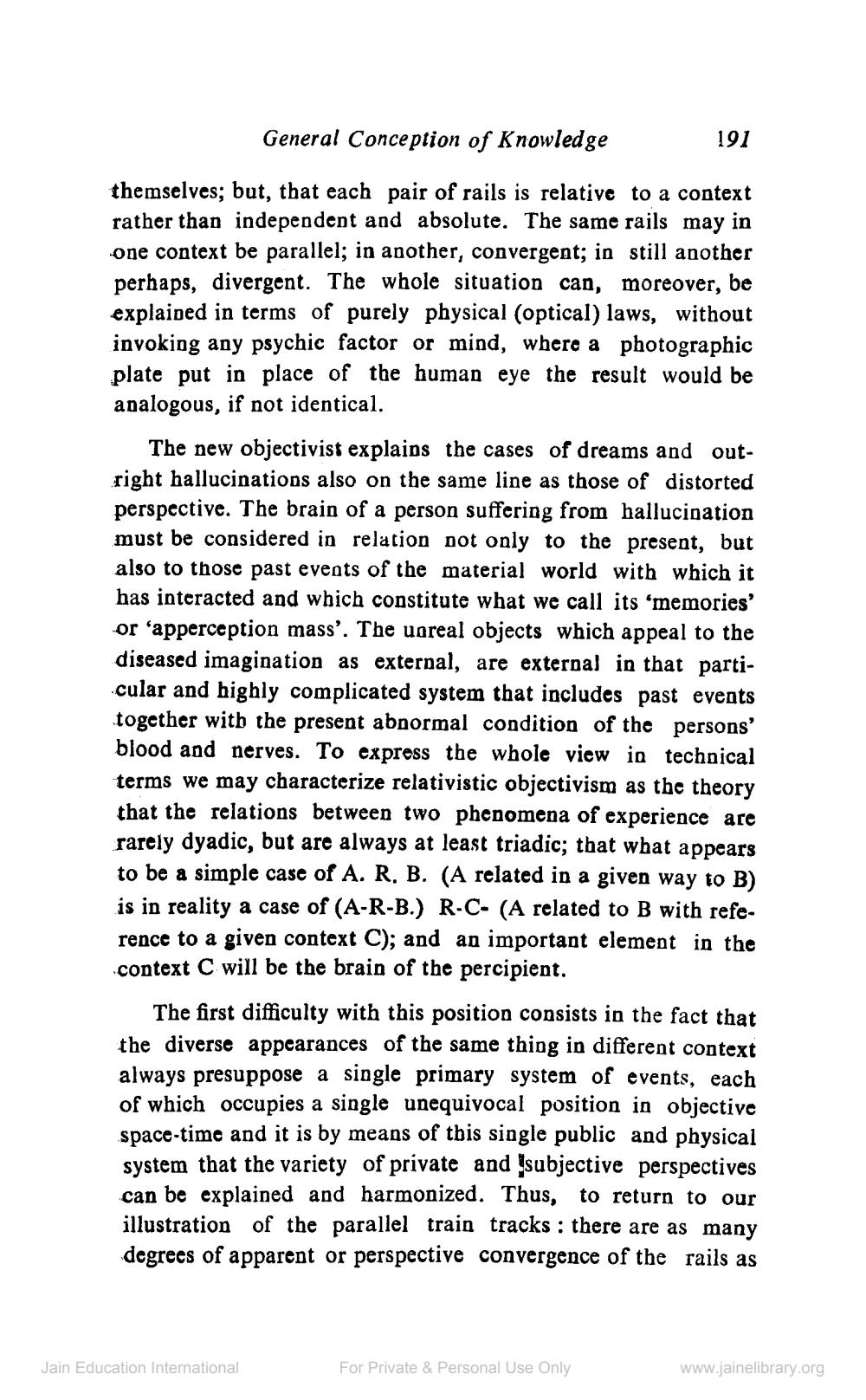________________
General Conception of Knowledge
191
themselves; but, that each pair of rails is relative to a context rather than independent and absolute. The same rails may in one context be parallel; in another, convergent; in still another perhaps, divergent. The whole situation can, moreover, be explained in terms of purely physical (optical) laws, without invoking any psychic factor or mind, where a photographic plate put in place of the human eye the result would be analogous, if not identical.
The new objectivist explains the cases of dreams and outright hallucinations also on the same line as those of distorted perspective. The brain of a person suffering from hallucination must be considered in relation not only to the present, but also to those past events of the material world with which it has interacted and which constitute what we call its 'memories' or ‘apperception mass'. The usreal objects which appeal to the diseased imagination as external, are external in that particular and highly complicated system that includes past events together with the present abnormal condition of the persons' blood and nerves. To express the whole view in technical terms we may characterize relativistic objectivism as the theory that the relations between two phenomena of experience are rarely dyadic, but are always at least triadic; that what appears to be a simple case of A. R. B. (A related in a given way to B) is in reality a case of (A-R-B.) R-C- (A related to B with reference to a given context C); and an important element in the context C will be the brain of the percipient.
The first difficulty with this position consists in the fact that the diverse appearances of the same thing in different context always presuppose a single primary system of events, each of which occupies a single unequivocal position in objective space-time and it is by means of tbis single public and physical system that the variety of private and subjective perspectives can be explained and harmonized. Thus, to return to our illustration of the parallel train tracks : there are as many degrees of apparent or perspective convergence of the rails as
Jain Education International
For Private & Personal Use Only
www.jainelibrary.org




